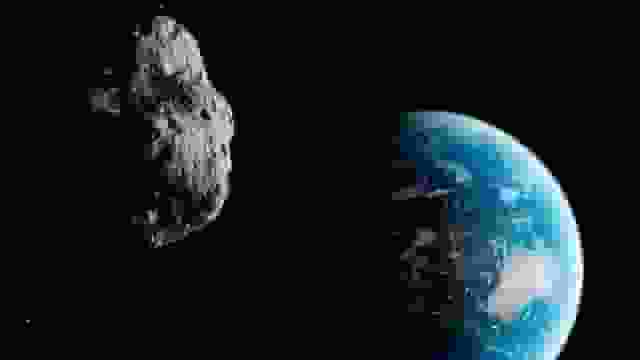
An Asteroid larger than ten buses aligned end-to-end is presently traversing interstellar space, with Earth as its next destination.
According to NASA, the colossal space rock known as 2013 WV44 is predicted to have a close encounter with Earth.
Impressive Speed of Approaching Asteroid
With an estimated diameter of up to 524 feet (160 meters), surpassing iconic structures like the London Eye and Big Ben, this enormous asteroid is anticipated to approach our planet on Wednesday at approximately 9am BST.
Experts indicate that the 2013 WV44 is traveling at an impressive speed of 11.8 km per second, which equates to over 26,000 miles per hour, a remarkable 34 times the speed of sound. However, there is no need for alarm despite its rapid velocity and substantial size.
At its closest approach, the asteroid is expected to maintain a safe distance of approximately 2.1 million miles from Earth, roughly nine times farther than our Moon. Nevertheless, it still falls under the category of a near-Earth object (NEO) according to NASA’s classification.
Read more: Virgin Galactic Poised To Make Groundbreaking Strides In Space Tourism
Celestial Bodies Shaped by Planetary Gravitational Forces

NEOs, including comets and asteroids, are celestial bodies whose orbits have been influenced by the gravitational attraction of nearby planets, causing them to come into close proximity to Earth. They primarily consist of water ice with embedded dust particles and serve as remnants from the formation of the solar system billions of years ago.
NASA emphasizes the scientific significance of comets and asteroids as relatively unchanged debris from the solar system’s formation process.
While 2013 WV44 has garnered attention due to its size and proximity, it does not meet the criteria for a potentially hazardous asteroid (PHA), which is determined by an asteroid’s size and its potential to make dangerously close approaches to Earth.
To be classified as a PHA, an asteroid must come within 0.05 astronomical units (4.65 million miles) of Earth and have a diameter larger than 459 feet (140 meters).
NASA’s diligent tracking of NEOs plays a crucial role in monitoring these celestial objects. As of now, there are 32,254 known near-Earth asteroids in our solar system, an increase from the previous count of 30,000 recorded in October.
Among these, more than 10,000 are estimated to have a diameter larger than 460 feet (140 meters), and nearly 1,000 are larger than 3,280 feet (1km). These figures highlight the importance of closely monitoring these celestial travelers.
Read more: Advocates Urge CMS To Streamline Medicare Advantage Prior Authorizations

